How to Improve Your eCommerce Conversion Rate – Don’t Settle For 2%
Despite the money spent on customer acquisition, most stores are surprisingly complacent about their eCommerce conversion rate. Surveys documenting average conversion rates usually put the figure around 2%. That might seem reasonable, but consider this…
The Royal Albert Hall seats 5500 people. If 2% of the audience buys something during a show (ie. if the Royal Albert Hall had the same conversion rate as most eCommerce websites) all the bars, merchandise stalls and snack shops would be fighting over only 110 customers. That’s a lot of empty barstools!
How To Systematically Improve eCommerce Conversion Rates
eCommerce conversion rates can be increased without spending much time or money. In this article, we discuss the industry benchmark for conversions, explain why conversion rates matter and consider how to improve them.
Average eCommerce Conversion Rates
Average eCommerce conversion rates vary depending on who you ask. A recent compilation of different surveys put the figure at 2%, but some websites convert over five times as often.
| Average eCommerce Conversion Rate (%) | Research Body | Date of Survey |
|---|---|---|
| 1.6 | Litte Data | 2020 |
| 1.85 | Wolfgang Digital | 2019 |
| 1.55 | IRP Commerce | 1st January 2019 |
| 2.86 | Invespcro | EQ3 2018 |
| 2.42 | Monetate | 2018 |
| 2.58 | Compass | 2018 |
- A Little Data report based on a survey from May 2020 placed the average conversion rate for a Shopify store at 1.6%.
- The Wolfgang Digital “Key Performance Indicator Report” for 2019 put the average eCommerce conversion rate at 1.85%. The average conversion rate by user was 3.2%.Perhaps more significantly, the agency found a strong relationship between Sessions Per User and Website Revenue (which highlights the importance of return visits).
- IRP Intelligent Commerce put the average conversion rate during 2018 at 1.55%, a marginal increase from 2017. However, the numbers also suggest that Average Order Value (AOV) decreased significantly during this period.
- Monetate’s most recent quarterly KPI and benchmark report suggested that the average conversion rate for eCommerce in the UK was 4.04%. Intriguingly, this was significantly higher than the US (an average eCommerce conversion rate of 2.23%).
These rates might seem perfectly adequate but, as I mentioned at the start of this article, there are good reasons for aiming a lot higher.
Why Conversion Rates Matter for eCommerce
There are a number of reasons to focus on conversions. Alongside other more obvious metrics (volume, traffic source, CPA…), conversion rate has a big part to play in your store’s performance. That’s one reason why websites that focus on conversion rate optimization see an average increase of 223% in ROI from their PPC campaigns.
Increasing your conversion rates has 3 main benefits:
- Revenue: Increasing your conversion rates is the most cost-effective way to build your revenue. Instead of spending your marketing budget on advertising (which reduces the quality of your traffic) CRO is the most reliable way to get more sales.
- Value: Improving your conversion rate means your website offers more value. Paying attention to User Experience (UX), reducing Ambiguity, reassuring your customers or adding persuasive content to you website, all adds value to your products.
- Remarketing: as any marketer will tell you, the best audience for future sales is former customers. Re-marketing is a huge part of an effective marketing mix, but it can’t take place unless you make the first sale. Finding a way to turn a few more uncertain browsers into customers (and then re-marketing to them) is more efficient than spending big on marketing to strangers.
Alongside these three big benefits, there’s one more reason why your eCommerce conversion rate is crucial to your store’s success. It’s called the “Winner-Takes-All Effect”…
eCommerce Conversion Rates and Winner-Takes-All Game Theory
Most good games have what’s known as a “Catch-Up Mechanism.” Supposing you are ten roles into a board-game, and there is already a clear winner, most games have a way of slowing the leader down. For example, in snakes-and-ladders there are always longer snakes towards the end of the board.
However, there are also situations in life where Catch-Up Mechanics are balanced against another phenomenon: Competitive Divergence. A good example of this is the board game Monopoly. As a player accumulates property they earn more money, so early leaders almost always win the game.
Everybody has some experience of these effects. However, there is a third type of competition that most people rarely experience: the Winner-Takes-All scenario. This model is also the key to understanding why eCommerce conversion rates matter.
The “Winner-Takes-All” effect, also known as the “Slight Edge” phenomenon occurs in scenarios where only the winner receives a reward. When that reward allows the leader to become even more competitive, a single person or organisation can dominate a field. The phenomenon is best described in the book “The Winner-Take-All Society” by Robert H. Frank and Philip J. Cook.
The effect is particularly apparent in online industries. Slight differences between competitors (in price, convenience or strategy) are multiplied many times due to the volume of unique customers. This then reinforces the resources of the market leader. The success of Google and Amazon illustrates how a slight competitive advantage, when multiplied by the scale of online commerce, can be turned into market dominance.
How To Compete In A Winner-Take-All Market
The only way to compete in a Winner-Takes-All scenario is to find a competitive advantage. For eCommerce websites, this usually means doing everything you can to increase your conversion rate. Learning how to convert more of your visitors into customers is worth more to your business than the value of the sales:
- Your customers become better prospects for marketing
- Your competitors lose the resources you gain
- The value of your products increases (due to Social Proof, scarcity, and brand exposure)
Your conversion rate is a measure of the value you are offering; it keeps score of how many “matches”, “rounds” or “races” you are winning. Because eCommerce operates in a Winner-Takes-All environment, improving this number is the best way to becoming a market leader.
How To Increase eCommerce Conversion Rates
Whilst there is no universal formula for increasing eCommerce conversion rates, a combination of industry surveys, psychological studies and data science have shown how small changes can have a significant effect on your sales/customer ratio. They have also highlighted common features in almost every high-converting eCommerce website.
- A strong value proposition
- Quick and easy navigation to product pages
- Fast page-loading
- Consistent trust signals
These steps will help you to systematically increase your conversions, measuring your progress at regular intervals.
Step 1: Benchmark Your Conversion Rate
If your website is hosted on an eCommerce platform like Shopify, you will have built-in analytics dashboards that tell you exactly what your conversion rate is. For other websites, Google Analytics allows you to view how people use your website, where they exit and whether your conversion rate is above average.
Checking Your Conversion Rate on Shopify
To check your Shopify conversion rate, open up the Analytics section from your left panel and choose Dashboards. The thing to look for is the Online Store Conversion Rate widget, which should break down your sales funnel into three separate stages.
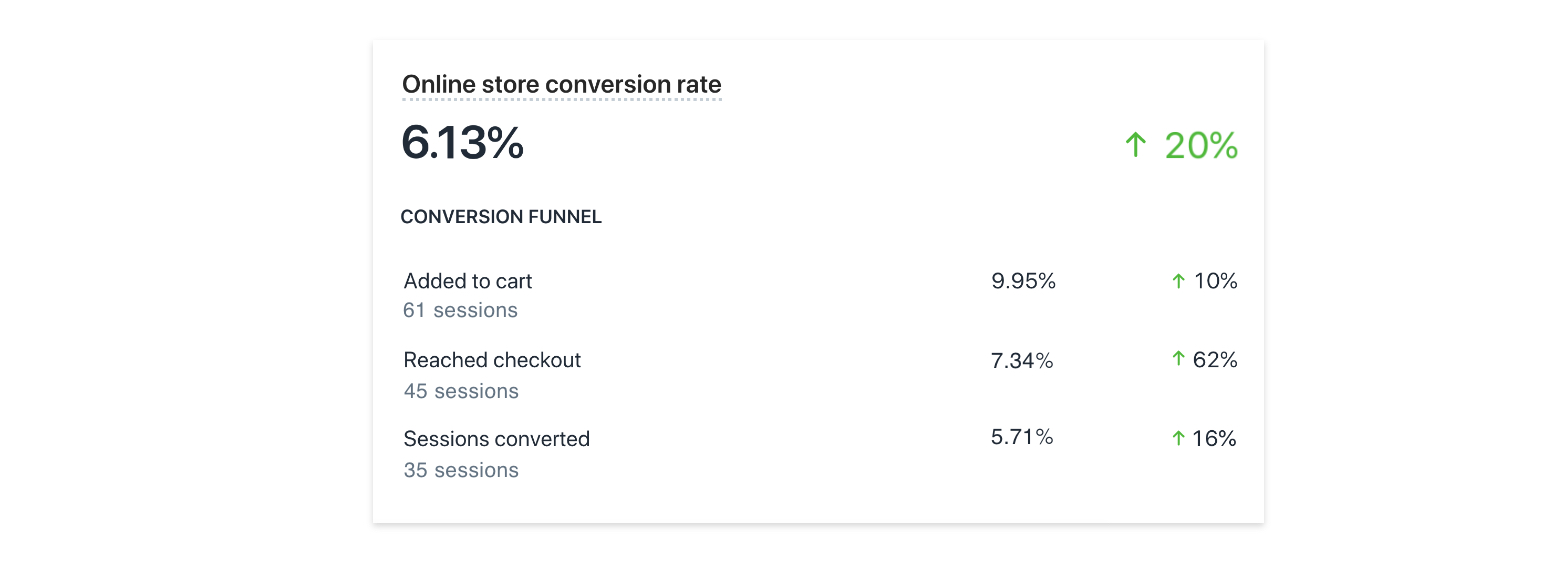
In 2019, the average conversion rate for a Shopify store was just 1.5%, whilst it was measured at 1.6% in May 2020. So, if you’re converting less than 1 in 100 of your visitors, conversion rate optimization is a priority.
Checking Your Conversion Rate in Google Analytics
To check your conversion rate in Google Analytics, navigate to the “Conversions” section of the interface and open up your “Goals” report. Your conversion rate will be divided into different goals, and you can add alternative dimensions and metrics to break your data down further.
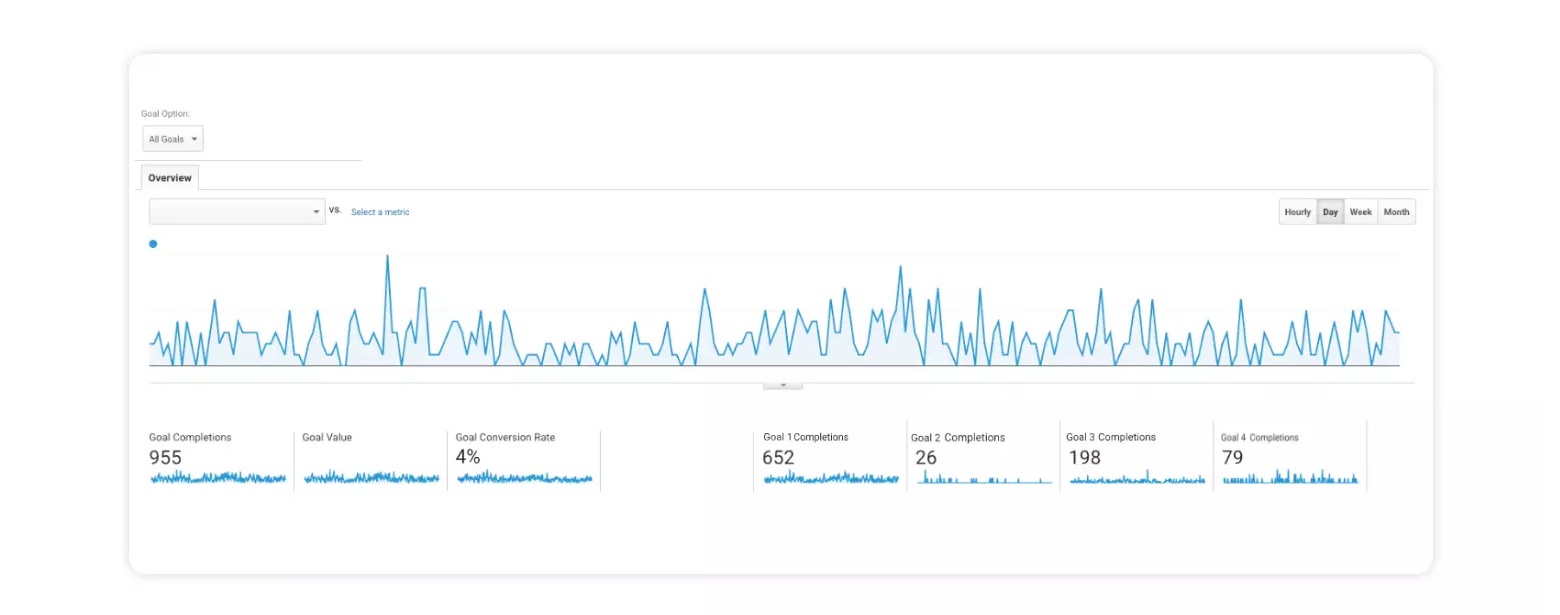
Step 2: Make Sure You Meet The Trust Threshold
Increasing your eCommerce conversion rate requires you to systematically remove obstacles and increase incentives. The first, and most significant obstacle preventing a visitor from making a purchase is trust.
When a visitor clicks on your site, they remain guarded until you reach the “Trust Threshold”. Before this point, they are unlikely to make a purchase – even if you offer them something remarkable. After this point, any improvement in your offer will increase the sales you get.
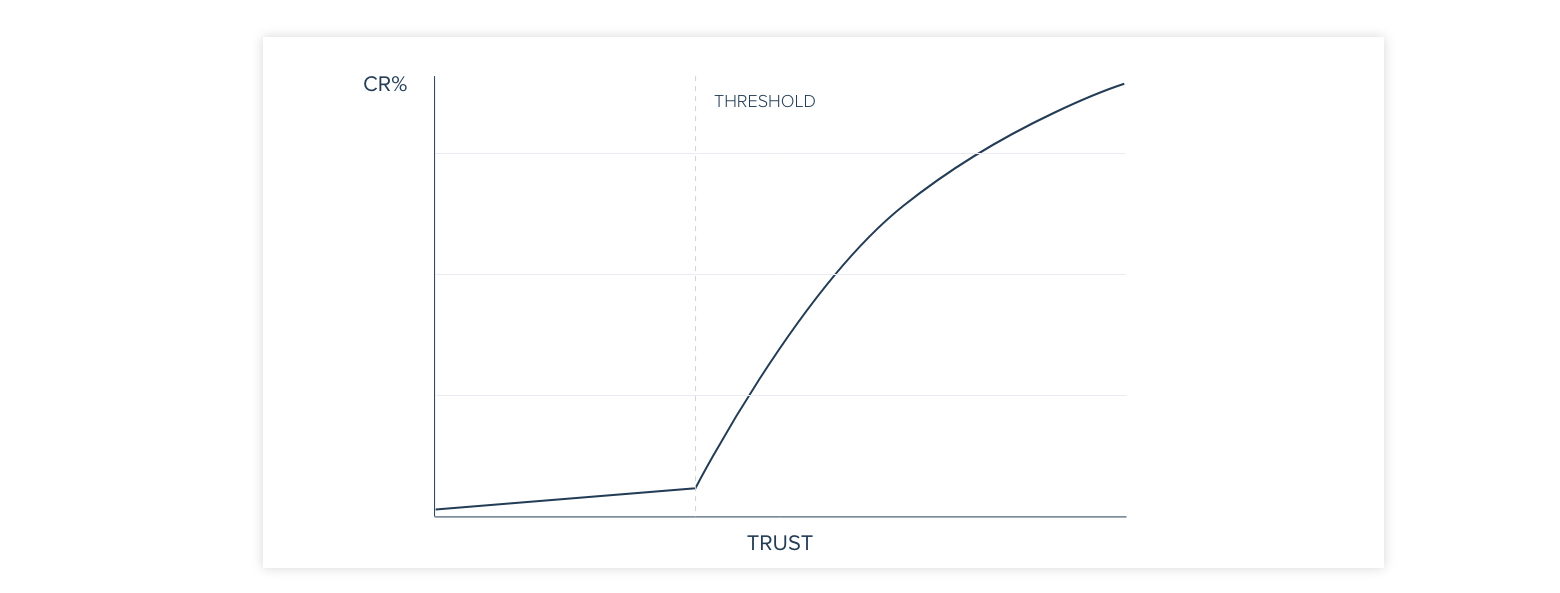
Trust is influenced by a number of factors. For example, a famous study on the impact of seller profiles showed the importance of “Uncertainty Reduction”. Even when a seller’s profile was not ranked as “trustworthy” by participants, they still converted more visitors than stores that included no information about the seller.
Other studies, focusing on user psychology, highlight a number of unpredictable “Associative” factors in determining consumer trust. These less rational influences relate to the way a website makes its users feel.
One of the most powerful ways to increase consumer trust in your website is to use Social Proof. For eCommerce websites built with Shopify, WooCommerce or Big Commerce, there are apps that instantly add Social Proof notifications to your store. Elsewhere, we have created a comprehensive list of the best Social Proof Apps for Shopify. To find more techniques for applying social proof to your site, you can also explore our list of 14 ways to apply Social Proof to eCommerce websites.
Step 3: Identify And Remove Usability Problems
The Wolfgang Digital report on conversion rates showed that Sessions-Per-User was an accurate predictor for website Revenue. Considering how important return visits are to your revenue, it makes sense to keep your website as user-friendly as possible. So, the next step is to identify and remove any usability issues.
How to Know If Your Website Has Usability Problems
CRO tools help you find and fix usability problems before they impact your sales. For example, session recording tools allow you to record visitors to see how they interact with your site. The best tools curate a selection of useful recordings based on behaviours like “rage clicks” – so you only see the things that need fixing.
Another way to see if you might have a usability issue is to check your Site Content report on Google Analytics. Simply open the Behaviour report from the side panel, choose the sub-report Site Content and then click All Pages. This will open up a table showing the page views, bounce rate, and %exit for each URL on your site.
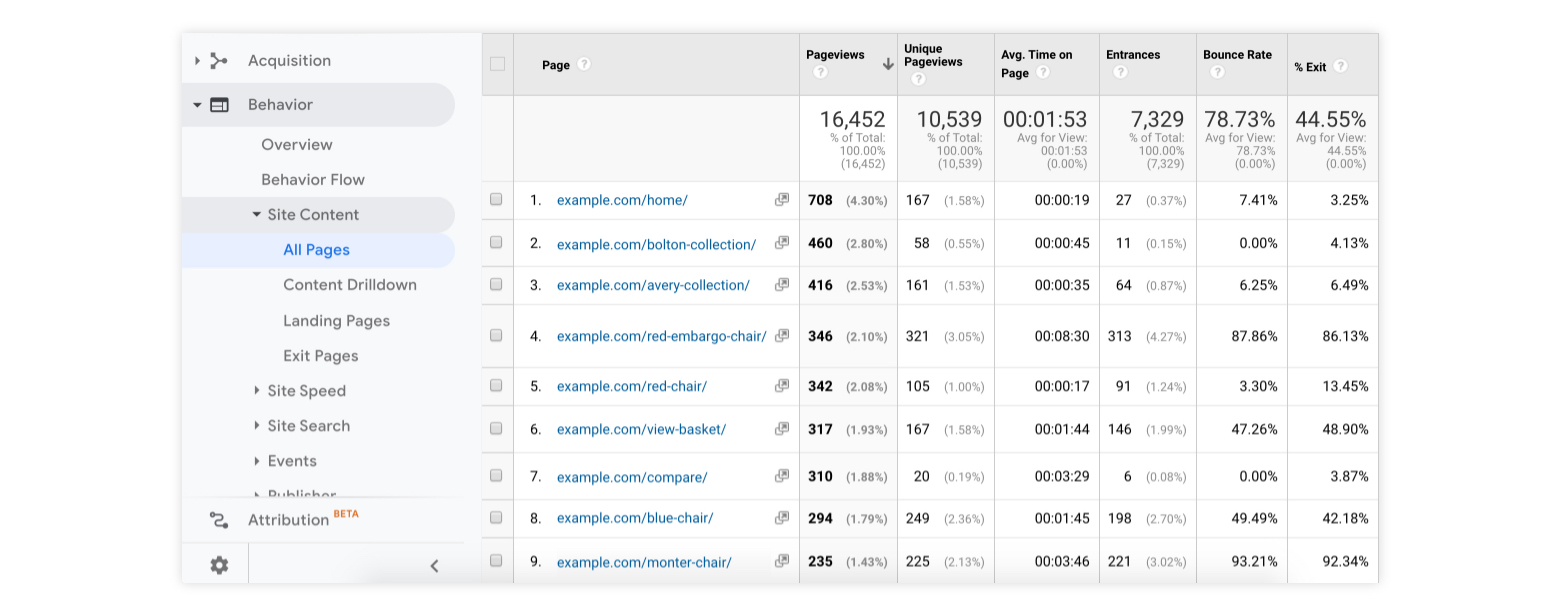
Clicking on the bounce rate column will allow you to order your pages according to the percentage of bounces it receives. That way, you can quickly identify any substantial usability problems.
To get more detailed insight into the way users are navigating your site, and find any usability problems they might encounter, you can use paid CRO tools such as heat maps, scroll maps and on-page surveys.
What Makes For a Good User Experience?
Cognitive ease is the foundation for a good User Experience, and that matters for two reasons:
- It encourages positive emotional associations with your products.
- Customers are more likely to return to a user-friendly website.
Whilst website user experience is a complex issue, there is one thing that almost every UX designer insists on: Keep things simple. Making your website as focused and transparent as possible will improve usability and, as a result, conversion rates. Marketing Experiments, an online library of Conversion Rate and A/B testing case studies, undertook research on whether one or two-column-websites drive more conversions. The results showed an unbelievable 681% increase in conversions.
Keeping your form fields to a minimum, avoiding unnecessary content and highlighting important elements with visual cues is a good place to start.
Step 4. Create Persuasive Content
Because most of our decisions are based on intuition and guesswork, our online behaviour displays characteristics called Cognitive Biases. These effects also make different kinds of information more persuasive than others.
Loss Aversion and FOMO
For example, most of us experience a powerful Loss Aversion. According to research conducted by Amos Tversky and Daniel Kahneman in 1984, the emotional impact of loss is around twice as large as the pleasure of gaining. Whilst the reason for this is not obvious, it explains why people will often avoid risks, even when their circumstances suggest this is the best strategy. People are resistant to behaviours or strategies that expose them to feelings of loss, even when the strategies are significantly more likely to be successful. A good example of this is the Monty Hall problem, where participants adopt (often irrational) behaviours to minimise the potential for experiencing loss.
FOMO marketing involves the use of time limits or limited supply (scarcity) to create a sense of urgency. By building these triggers into both your marketing strategy and your website, you can encourage visitors to take action. Using FOMO notifications is a powerful way to increase eCommerce conversion rates.
Implicit Egotism and Personalization
Most people make sense of the world by thinking about how it affects them. Because of this, your online content will have a bigger impact if you present your products from your visitors’ point of view.
For example, your product descriptions should focus on the benefits that a customer can expect to receive – placing these in the context of their real lives.
However, a more powerful application of Implicit Egotism is the use of personalized Nudges that turn live data into relevant messages for your visitors, at each step of their journey.
Step 5. A/B test Your Content
The first four steps are best-practice suggestions based on past experience. However, to really understand what kind of content will engage your visitors and increase sales or sign-ups, you have to test it. A/B testing allows you to do that, taking all the guesswork out of web marketing.
A/B tests often produce surprising results, challenging the assumptions we make about our content. Because of this, they are an essential part of conversion rate optimization.
How eCommerce Giants Use A/B Tests
The most famous example of A/B testing in a marketing campaign is the presidential campaign of Barack Obama in 2008. By experimenting with different images for the website mybarackobama.com, the campaign was able to generate over $75 million in additional campaign donations. However, the same technique has also been used to increase conversion rates for a number of the world’s most successful eCommerce businesses.
A great example of a simple adjustment producing an immediate improvement in conversion rate was demonstrated by Vanity Planet, an online distributor of beauty products. They decided to add photos of happy customers to the product page of a particular skin brush, and A/B tested the variation against the original page. The experiment was a remarkable success. Over 10 days, Vanity Planet tested 6000 unique visitors. The micro-conversion rate (visitors who continued to the checkout from the product page) for the original page was 6.56%. For the new page it was 8.11%. Optimizing their website in this way gave Vanity Planet a Conversion Rate uplift of 24%.
One last thing about eCommerce conversion rates…
…they’re not everything.
Seriously, having spent an entire blog post explaining how important they are and how to improve them, I am now going to tell you why you need to look beyond conversion rates.
The problem is that conversion rates only measure sales. They don’t take into account Average Order Value (AOV), Cost Per Lead (CPL), Customer Retention Rate (CRR), or Customer Lifetime Value (CLV). They don’t even provide a measure of how many unique visitors make a purchase (so a customer who browses one day and buys something later would give you a conversion rate of 50%).
If your AOV decreases or your customer retention (and, therefore, traffic) disappears, you could increase your conversion rate and still end up losing revenue. Similarly, expensive advertising can give you an impressive conversion rate, whilst still reducing the amount of money you earn. That’s why it is important to make sure you optimize in all four of these key areas at the same time. We call this Revenue Optimization.
Brick-and-Click, eCommerce and dark store delivery businesses can all apply Revenue Optimization to their websites. In fact, it is the only way to succeed in the winner-takes-all game of online business.
Conclusion
Mediocrity is not the way to success. Sometimes, it takes just one extra step to stand out from the crowd. In many ways, eCommerce has come to reflect the idea of the Winner-Takes-All society. In this scenario, a marginal advantage over your competition, especially in terms of Conversion Rate, will produce disproportionate gains for your business.
There are a few proven techniques for improving eCommerce Conversion Rates:
- Using reviews and popularity to apply Social Proof
- Restructuring your site to simplify things and improve User Experience
- Harnessing urgency and scarcity to add value to your products
Whether you find the impact of techniques like this hard to believe, or have already started applying neuromarketing principles to your business, we would love to hear from you.
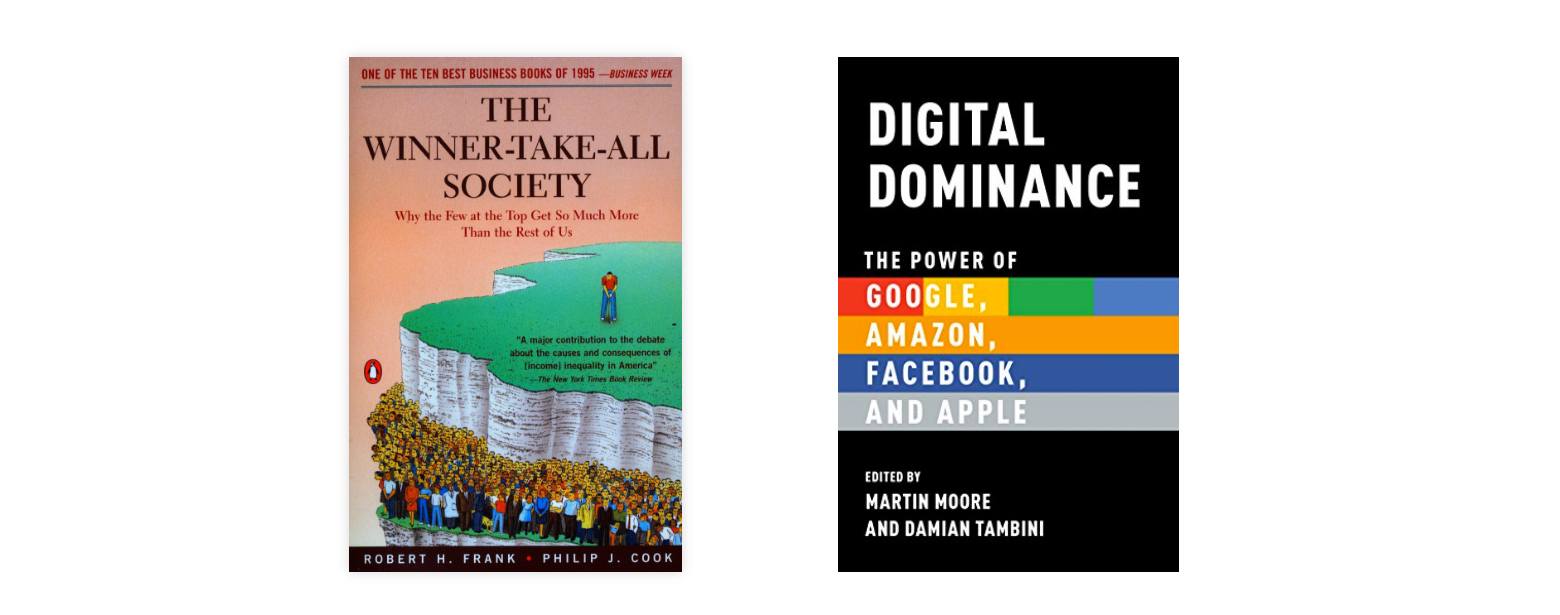




The ‘winner takes all’ mindset when optimizing a site indeed the RIGHT one to take. Your goal should be to make your site convert so well the cost of every visitor to your site eventually becomes irrelevant. MUCH easier to scale vs. only working on your ads that way.
Spot-on about the scalability issue! One of the biggest obstacles for start-ups and SMEs is scaling their marketing, so increasing conversions is usually the best solution.
If you want to increase sales and conversions for your WooCommerce store, these are the steps to follow:
1. Create Urgency with deadlines
2. Use appealing call-to-action buttons
3. Recover abandoned carts whenever possible
4. Give a clear title and description for each product
5. Use high-quality product images
6. Take every opportunity to up-sell and cross-sell
7. Offer discounts on the products that typically bring more returning customers
8. Promote your store on multiple channels and optimise your campaigns
9. Use effects like Social Proof
Thanks for the feedback – this is a great list! I would add one more item:
10. Audit your tracking and analytics regularly, and follow a test-and-learn approach to CRO.
These simple and inexpensive methods can significantly help in improving e-commerce conversions without blowing your marketing budget.